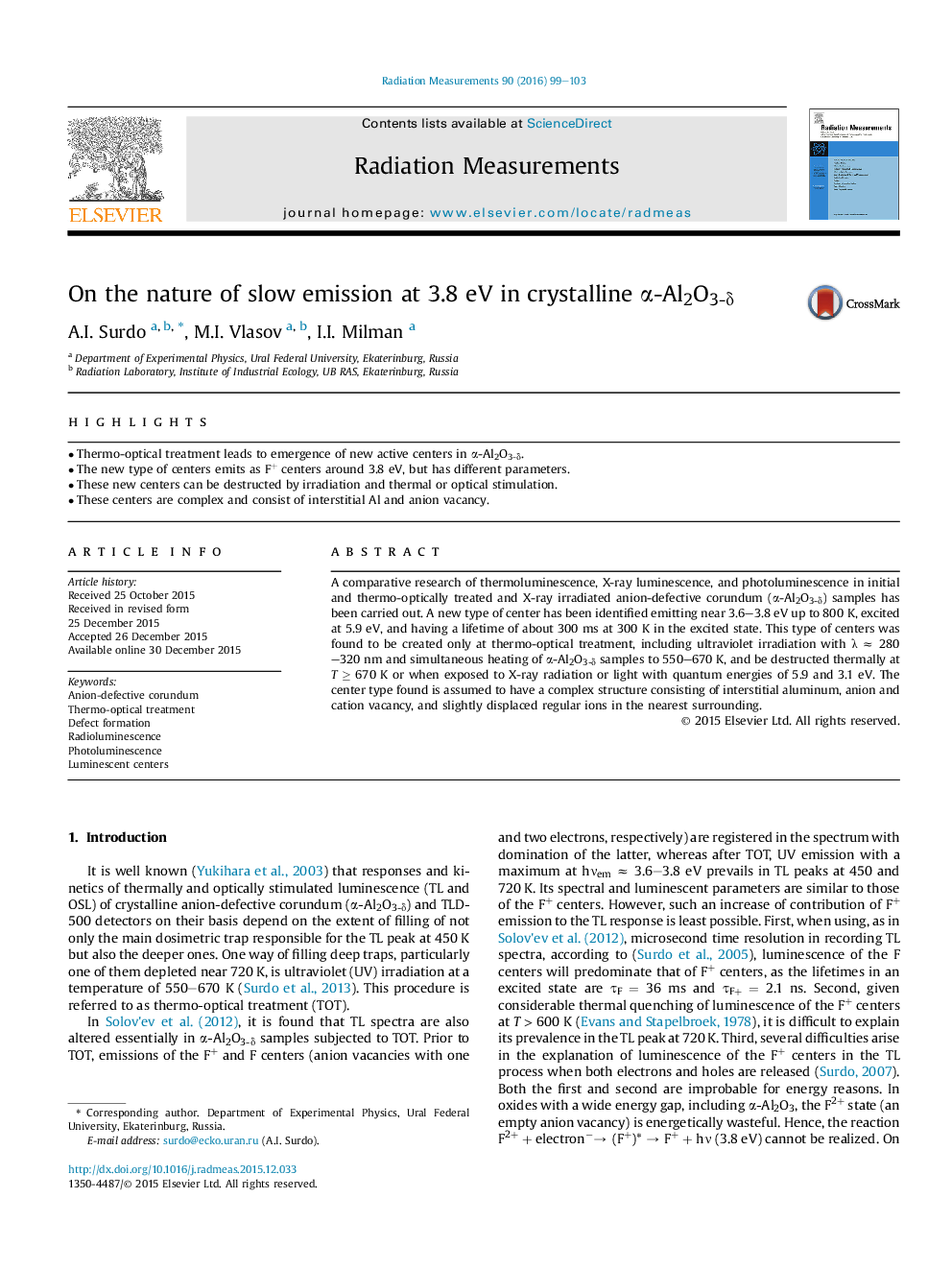| Article ID | Journal | Published Year | Pages | File Type |
|---|---|---|---|---|
| 1888020 | Radiation Measurements | 2016 | 5 Pages |
•Thermo-optical treatment leads to emergence of new active centers in α-Al2O3-δ.•The new type of centers emits as F+ centers around 3.8 eV, but has different parameters.•These new centers can be destructed by irradiation and thermal or optical stimulation.•These centers are complex and consist of interstitial Al and anion vacancy.
A comparative research of thermoluminescence, X-ray luminescence, and photoluminescence in initial and thermo-optically treated and X-ray irradiated anion-defective corundum (α-Al2O3-δ) samples has been carried out. A new type of center has been identified emitting near 3.6–3.8 eV up to 800 K, excited at 5.9 eV, and having a lifetime of about 300 ms at 300 K in the excited state. This type of centers was found to be created only at thermo-optical treatment, including ultraviolet irradiation with λ ≈ 280–320 nm and simultaneous heating of α-Al2O3-δ samples to 550–670 K, and be destructed thermally at T ≥ 670 K or when exposed to X-ray radiation or light with quantum energies of 5.9 and 3.1 eV. The center type found is assumed to have a complex structure consisting of interstitial aluminum, anion and cation vacancy, and slightly displaced regular ions in the nearest surrounding.
